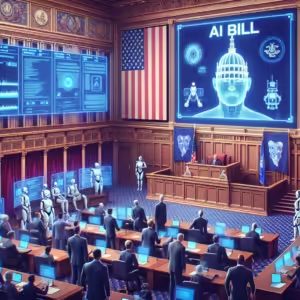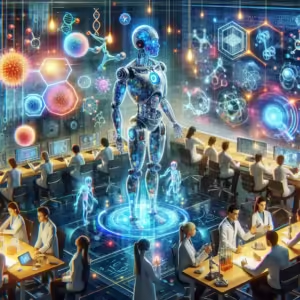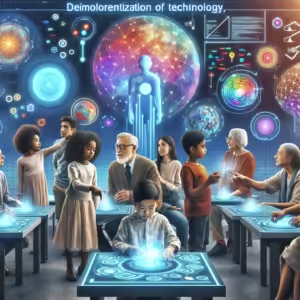In the rapidly evolving landscape of artificial intelligence, generative AI continues to demonstrate its groundbreaking potential. A recent study has revealed significant advancements in image reproduction using minimal training data, showcasing the power and versatility of these models.
Understanding Generative AI
Generative AI refers to models and algorithms capable of creating new content. These models are typically trained on vast data sets to generate text, images, music, and more. While traditional AI focuses on identifying patterns and making predictions, generative AI is about creativity and innovation. Its recent ability to learn effectively with limited data marks a pivotal moment in AI research and application.
The Breakthrough in Image Reproduction
The recent study, published in Fast Company, captures a breakthrough in how generative AI can replicate images with significantly less data than previously required. This advancement suggests that models can now learn from smaller data sets while maintaining accuracy and quality, making them more accessible and cost-effective for various industries.
Key Findings of the Study
- Reduction in Training Data: The study highlights a substantial decrease in the amount of data needed, allowing AI models to perform optimally without extensive databases.
- Enhanced Efficiency: AI systems now process data and reproduce images with increased speed and reduced computational resources.
- Greater Accessibility: With lower data requirements, more organizations can leverage AI technology, regardless of their size and data availability.
Implications for Various Industries
The ability of generative AI to reproduce images with minimal data has broad implications across numerous sectors:
Healthcare
In healthcare, AI plays a pivotal role in diagnostics and treatment planning. The new advancements in image reproduction mean that:
- Medical Imaging: AI can now assist with processing and analyzing imaging data like MRIs and CT scans, even in data-restricted scenarios.
- Research Opportunities: Reduced data requirements could spur more research opportunities in pharmaceuticals, where data privacy is a concern.
Creative Fields
For artists and designers, generative AI offers tools to enhance creativity:
- Design Innovation: By utilizing smaller portfolios, AI can aid in generating new designs and concepts.
- Resource Efficiency: Reduced computational demands mean more independent artists can use AI tools to enhance their craft.
Business and Marketing
Generative AI’s improved image reproduction capacity is a boon for marketing teams and businesses globally:
- Cost-Effective Solutions: Companies can now create high-quality visual content with lower investments in data collection and processing.
- Customization and Personalization: With AI, businesses can personalize marketing materials to target audiences without massive datasets.
Challenges and Opportunities
While the advancements in generative AI technology are promising, they come with their own set of challenges and opportunities:
Challenges
- Data Bias: Smaller data sets may not fully capture the diversity needed, potentially leading to biased outputs.
- Ethical Concerns: The ability to generate realistic images raises questions about authenticity and misuse.
Opportunities
- Refinement of Algorithms: Continuous refinement of AI algorithms can help mitigate data bias and enhance output quality.
- Cross-Industry Integrations: Combining generative AI with other technological advancements, like blockchain for data privacy, could open new avenues.
The Future of Generative AI
As generative AI continues to evolve, the landscape of innovation is vast and unbounded. The ability of these models to work efficiently with minimal data will democratize AI technology, making it an indispensable tool across industries.
As researchers and developers continue to explore and refine these capabilities, generative AI stands poised to transform how we interact with and perceive digital content. The ongoing advancements hint at a future where less is more—ushering in an era of efficiency, creativity, and opportunity.
“`
This article focuses on the significant strides made by generative AI in image reproduction using minimal training data, highlighting implications across various industries and recognizing associated challenges and opportunities.








